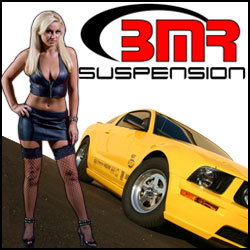Don't know if there has been thread about this but I'm curious about what the numbers should be on different kinds of gauges/PID's.
What are normal values for like
Air Intake Temp
Engine Coolant temp
between what is it called "normal" and when is it getting hot or what's becoming dangerous.
I've been riding with my SCT on those PID's and have no idea what it should read.
My AIT goes from 60 (at startup and it was rather cold) to 108 with normal cruising.
Is there somekind of rule that goes around saying it should be this of that compared to the outside airtemp?
The ECT has been to a max of 238 but was mostly somewhere between 200-210.
I'm running a Brenspeed B326 stage 3 with E-force S/C
What are the other intresting things to keep an eye on?
A/F, Boost gauge and oil pressure are on their way.
Do you know where your iat is being taken from? On a stock s197 it's taken by the maf. On a forced induction setup you want to see the temps after the compressor. Preferably as close to the intake as possible. Tapping into an intake runner and using a lightning or similar temp sensor is what most do. The temp sensor wires and spliced into the maf wires so the ecu sees the after compressor iat. Maybe the Edlebrock setup already relocates the iat sensor?
If yours is after the blower then a 108 iat is probably pretty good. With my Whipple I would see about 20 degrees over ambient during normal driving while moving. It would go up at a stop but come right back down after the car was underway. 135 degrees is a popular temp to start pulling spark advance for iats on a forced induction setup. If you run e85 then you can go much higher with the temps because the motor isn't going to experience detonation with higher iats.
Like previously mentioned the ect temp is actually taken at the head. Most tunes (and the factory) use a 4 degree difference between the head temp sensor and reported ect temp.
I like to monitor fuel trims. They will let you know if something is out of whack during normal driving. Fuel trims are the corrections the ecu is making to the predicted fueling. Corrections are made to keep actual a/f as close to stoich (14.1 for e10) as possible. They are reported in percent. There are two types of fuel trims, long and short. Short term fuel trims are the instant correction made based on the o2 sensors. Long term trims are predictive corrections based on the short term history. Both need to be added together to see how much correction is being made. Adaptive learning will allow the ecu to modify the maf xfer table in order to self tune during closed loop operation. This is mostly good but sometimes the ecu can learn bad habits. I had this happen with my Paxton prior to it being converted to a blow through due to the backwash that occurs with it. If I hadn't been monitoring fuel trims I never would of known how crazy the corrections were becoming over time. The solution for me was to turn off the adaptive portion that changes the maf xfer. The larger fuel trims never hurt anything, I'm just too ocd to accept it and not try to do something.
You won't have this with your Edelbrock. It doesn't have the backwash issues a 3v Paxton/Vortech setup has. However, crazy fuel trims will give you advanced warning about things that could prove potentially harmful. Things like the maf going out, unmetered air, accidentally loading the wrong tune, (I've done this, luckily I was running e85 at the time so nothing bad happened but there is at least one member who lost a motor by accidentally loading the stock tune), fuel issues, o2 sensor issues, and more.


